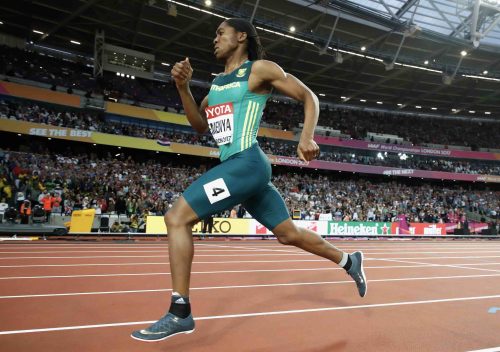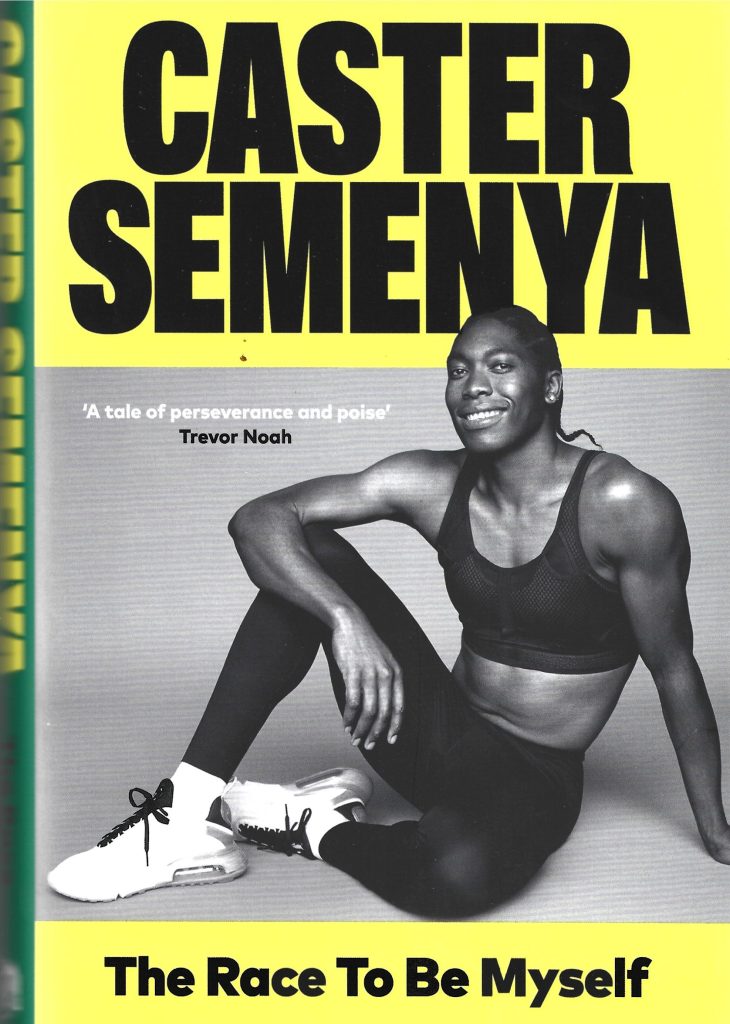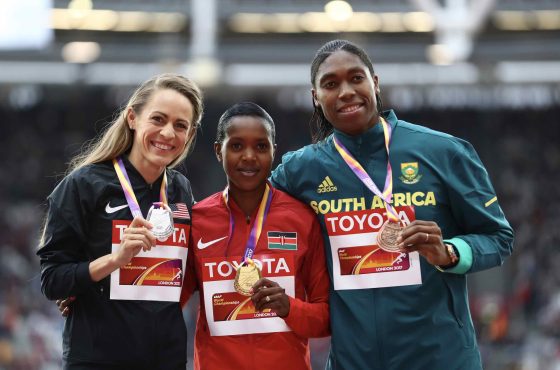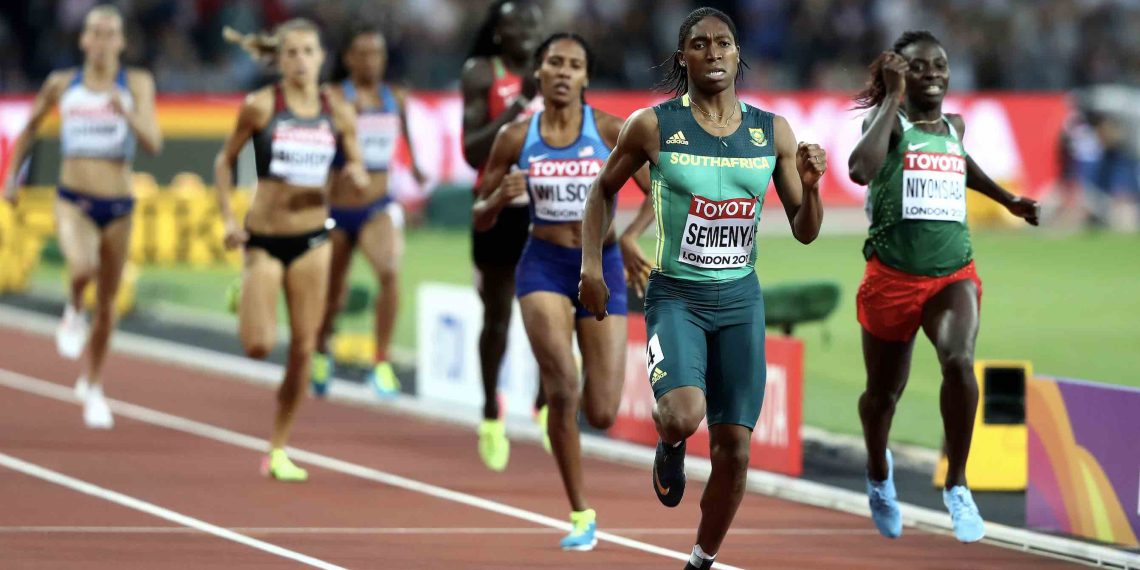Stuart Weir wrote this review of the new book by Caster Semenya. Caster and Stuart spoke on many occasions, and Stuart, as well as your editor, came to respect the athlete who was the focal point of so much discussion during her career. The thing is, we never saw Caster lose her cool, and she was always respectful of the media, athletes, and the situations that she endured. I hope that we could be so thoughtful when the world is being so negative about your very being. -Editor’s note.
RelatedPosts
Caster Semenya: The race to be myself, Penguin Randon House, 2023
ISBN878-1-529-18636-9
There are compelling arguments why Caster Semenya, the athlete, should have been allowed to compete as a woman; there are also strong arguments against it. This is not the place to re-open that debate. What is beyond dispute is that Caster Semenya, the person, was shockingly badly treated by World Athletics (IAAF) and by Athletics South Africa.

Caster Semenya has written the story of a person growing up in a South African village but with a dream to be successful and to fly in an airplane one day, going on to win the 800m in the 2012 and 2016 Olympics and the 2009, 2011 and 2017 World Championships as well as the 800/1500 double at the 2018 Commonwealth Games. I was privileged to see all those races – among others – and to have one long conversation with her.
The book strays regularly into biology with a statement already on the second page of the book: “I am female. I have a vagina, but I do not have a uterus. I do not menstruate, and my body produces an elevated amount of testosterone… I cannot carry a child because I don’t have a womb but, contrary to what many people think, I do not produce sperm”. Elsewhere, she writes: “So many amazing performances that year and Caster Semenya’s genitals the seemed to be the main story”. She refers to the uncomfortable experience of watching people discussing her body on television and feeling that the “world talked about me like I was an alien or a monster” and “Perfect strangers would treat my body like a science experiment”. One expression she used seemed particularly poignant: “publicly humiliated daily”.

It is a book of contrasts. Throughout the book, her faith in God is mentioned repeatedly. It is a central part of her identity that she believes that God created her and gave her the body she has. At the same time, the F word is used liberally, and several times, people in officialdom are branded “mother******”
She describes a happy childhood as a girl but “a different kind of girl”, often hunting or playing football with boys, being more comfortable in a tracksuit than a dress.
The first flashpoint was the 2009 World Championship when she “was only 18 years old and had been subjected to invasive and humiliating gender confirmation tests without my consent just prior to the race”. Her claims that on occasions, she went for what she assumed was a routine doping test but was then subjected to sex tests without her consent are shocking.
In sheer athletics terms, her win in the 2009 World Championship in 1:55.45 was remarkable given that she was 18 and had not even run a Diamond League or equivalent before Berlin, let alone dealt with pressure from Athletics South Africa and the IAAF. She says that her goals for Berlin were to get experience, finish 3-5 perhaps but that all the “noise” gave her a great determination to win. Incredibly, she won and was not invited to the medalists’ press conference.
With regard to other athletes, she is critical of Lynsey Sharp for refusing to shake hands after a race but singles out Maz Okoro as an athlete who wished her luck before the Berlin final. She is also critical of Seb Coe, “a small man, unsure of himself, one of those men who needed to wrap themselves in a sense of their own importance”, for making announcements, for example, during the 2016 Olympics and 2017 World Championships”, seemingly timed to deflect attention away from runners and their athleticism to Caster, the problem. She also alleges that IAAF leaked the initial results of her blood tests to the international press.

The book includes a lot of detailed arguments about the science and the arguments on both sides – which are too complex to be summed up here. What I did find disturbing was pressure from the authorities “to have an operation called a gonadectomy to remove the organs that are producing testosterone”. It is hard not to agree with Caster: “Who in their right mind would cut their body open unless something was wrong with them?” or with her summary, “The only solutions offered are medically unnecessary and potentially harmful”. It is again disturbing to read that she took IAAF-prescribed drugs for years and suffered side effects”.
She writes sentences like, “I felt that the IAAF has confiscated a large part of my life. I spent as much time fighting them as I have training and racing”, seemingly without bitterness. For many, it was an almost academic exercise. To Caster, “This was a fight for my life, identity, livelihood”.
Her statement early in the book: “I want to make clear that my story is not one of pain and torment, but rather about hope, self-confidence, and resilience,” rings true. Caster comes across as a positive person who is grateful for the talent she has been given and the opportunity to use it. Her epitaph is: “I did not waste the talent and the opportunity God and my ancestors bestowed upon me”.
In a second article, I will reflect on the Caster Semenya I watched in all the global championship appearances and my interactions with her.
Author

Since 2015, Stuart Weir has written for RunBlogRun. He attends about 20 events a year including all most global championships and Diamond Leagues. He enjoys finding the quirky and obscure story.
View all posts






















